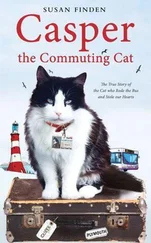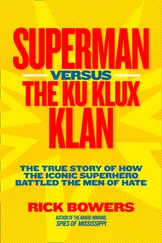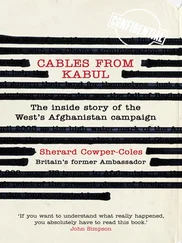Andrew Sorkin - Too Big to Fail - The Inside Story of How Wall Street and Washington Fought to Save the FinancialSystem--and Themselves
Здесь есть возможность читать онлайн «Andrew Sorkin - Too Big to Fail - The Inside Story of How Wall Street and Washington Fought to Save the FinancialSystem--and Themselves» весь текст электронной книги совершенно бесплатно (целиком полную версию без сокращений). В некоторых случаях можно слушать аудио, скачать через торрент в формате fb2 и присутствует краткое содержание. Жанр: Старинная литература, на английском языке. Описание произведения, (предисловие) а так же отзывы посетителей доступны на портале библиотеки ЛибКат.
- Название:Too Big to Fail: The Inside Story of How Wall Street and Washington Fought to Save the FinancialSystem--and Themselves
- Автор:
- Жанр:
- Год:неизвестен
- ISBN:нет данных
- Рейтинг книги:4 / 5. Голосов: 1
-
Избранное:Добавить в избранное
- Отзывы:
-
Ваша оценка:
- 80
- 1
- 2
- 3
- 4
- 5
Too Big to Fail: The Inside Story of How Wall Street and Washington Fought to Save the FinancialSystem--and Themselves: краткое содержание, описание и аннотация
Предлагаем к чтению аннотацию, описание, краткое содержание или предисловие (зависит от того, что написал сам автор книги «Too Big to Fail: The Inside Story of How Wall Street and Washington Fought to Save the FinancialSystem--and Themselves»). Если вы не нашли необходимую информацию о книге — напишите в комментариях, мы постараемся отыскать её.
Too Big to Fail: The Inside Story of How Wall Street and Washington Fought to Save the FinancialSystem--and Themselves — читать онлайн бесплатно полную книгу (весь текст) целиком
Ниже представлен текст книги, разбитый по страницам. Система сохранения места последней прочитанной страницы, позволяет с удобством читать онлайн бесплатно книгу «Too Big to Fail: The Inside Story of How Wall Street and Washington Fought to Save the FinancialSystem--and Themselves», без необходимости каждый раз заново искать на чём Вы остановились. Поставьте закладку, и сможете в любой момент перейти на страницу, на которой закончили чтение.
Интервал:
Закладка:
Weill and Dimon’s tenure at the company turned out to be brief. Although he once boasted that “the Jews are going to take over American Express!” Weill still found himself thwarted by the WASP hierarchy, unable to cut deals on his own. Increasingly frozen out by his colleagues and the board, he quit as president of American Express in 1985; Dimon, whose talents had been noticed by CEO James Robinson, was asked to stay. Dimon was at a point in his life where many in the same position might have opted for security; his wife had just given birth to their first child. But he decided to stick with Weill, even though Weill hadn’t yet settled on his next project and had taken space in a small office. As the months wore on and Dimon found himself watching Weill sleep off his martini lunches on their office couch, he wondered if he had made a bad bet. Weill couldn’t seem to get anything off the ground, and Dimon had asked himself whether his mentor had played his last hand.
Then, in the wake of Weill’s failed takeover of Bank of America, two executives at Commercial Credit, a subprime lender based in Baltimore, pitched him and Dimon on buying the company from its parent. Weill put up $6 million of his money to do the deal (Dimon invested $425,000), and the company was spun off, with Weill in charge. Dimon set himself up as the operations man, obsessively cutting costs. A lean-and-mean Commercial Credit became the cornerstone of a new financial empire, one that Weill and Dimon built through more than one hundred acquisitions. In 1988 the pair got their return ticket to Wall Street with the $1.65 billion acquisition of Primerica, the parent of the brokerage firm Smith Barney. A $1.2 billion purchase of Shearson from American Express followed in 1993.
Dimon’s reputation rose alongside Weill’s. They were a team: Weill, the strategist and deal maker; Dimon, more than twenty years his junior, the numbers cruncher and operations whiz. They had moved beyond mentor and protégé to something more like a long-married combative couple. In the Midtown Manhattan offices of Primerica, the chairman and the chief financial officer would argue ferociously, their voices booming down the corridors. In meetings Dimon would roll his eyes whenever he thought Sandy had said something foolish.
“You’re a fucking asshole!” Weill would yell at him.
“No, you’re the fucking asshole!” Dimon would shout back.
By 1996, after a $4 billion deal for Travelers, the company needed someone to run the combined asset-management operations. Weill was quietly pushing Dimon to promote his daughter, Jessica Bibliowicz, then thirty-seven, who was running Smith Barney’s mutual fund business. Dimon and Bibliowicz had known each other since they were teenagers, but she wasn’t considered a top-flight manager, and he had reservations about entrusting her with so powerful a job. A top executive took Dimon aside. “Promote her,” he warned Dimon. “You’re killing yourself if you don’t.” Dimon, however, was not persuaded and told Weill and others that she wasn’t ready for the job; they had better, more experienced executives in line.
The following year Bibliowicz announced that she was leaving the company. She didn’t blame Dimon for her decision but tried to emphasize the positive aspects of her departure, telling her father: “Now we can be father and daughter again.” But Weill was furious, and the relationship between him and Dimon would never be repaired, with tensions flaring with increasing frequency as the company continued its rapid expansion. Travelers acquired Salomon in 1997, and Weill made Deryck Maughan, a Briton who had helped steer Salomon Brothers through a Treasury bond scandal, the co-chief executive of Salomon Smith Barney, along with Dimon. This new power-sharing arrangement, although logical, greatly displeased Dimon.
A more injurious slight came after the $83 billion merger with Citicorp, the deal that rewrote the rules of the U.S. financial system as the last Depression-era barriers between commercial and investment banking—passed as the Glass-Steagall Act of 1933—were removed by a bill introduced by Republican senator Phil Gramm of Texas and Republican congressman Jim Leach of Iowa. Dimon had worked tirelessly to bring the deal to completion, yet when the time came to split the eighteen board seats of the merged company between Travelers and Citicorp, he found himself left out. He was made president of the company, but had only one direct report, the chief financial officer, Heidi Miller.
The untenable situation finally came to a head a few days after the new Citigroup reported a disappointing third quarter, the result of a summer of turmoil as Russia defaulted and the hedge fund Long-Term Capital Management nearly collapsed. That weekend had been set aside for a four-day conference for executives at the West Virginia resort of Greenbrier, capped by a black-tie dinner and dance. Around midnight a number of couples were trading partners on the dance floor. Steve Black, one of Dimon’s closest allies at Smith Barney, approached the Maughans and offered to dance with Maughan’s wife, a gesture that was intended as something of an olive branch, given the clashing factions within the company. But Deryck Maughan did not reciprocate, leaving Black ’s wife standing alone on the dance floor. A furious Black stomped off to confront Maughan.
“It’s bad enough how you treat me,” he shouted. “But you’re not going to treat my wife like that!” On the verge of hitting him, Black threatened, “I will drop you where you stand.”
Dimon attempted to intervene, tracking down Maughan as he was about to leave the ballroom. “I want to ask you a simple question. Either you intended to snub Blackie’s wife or you didn’t. Which is it?”
Maughan said nothing and turned to walk away. Incensed, Dimon grabbed him and spun him around, popping a button off his jacket in the process.
“Don’t you ever turn your back on me while I’m talking!” he shouted.
When Weill learned of the incident, he judged it inappropriate. A week later, he and his co-CEO, John Reed, summoned Dimon to the corporate compound in Armonk, New York, where they asked him to resign.
It proved to be both the worst and best thing that ever happened to Dimon. Just as Weill had done after leaving American Express, he took his time finding a new job, turning down a number of suitors—including, reportedly, the Internet retailer Amazon. Dimon knew little else outside of banking, and he waited for an opportunity in his field, finally accepting the top job at Bank One, a second-tier, hodgepodge operation based in Chicago. It was the launchpad he had been looking for, and he set out to streamline its operations and repair its balance sheet, to the point where he could engineer a deal with JP Morgan in 2004 that would put him in line to succeed William Harrison as CEO.
Once the proudest of Wall Street institutions, JP Morgan had fallen into the middle of the pack as its competitors had begun to outdo it. Dimon brought in his own team of expense cutters and integration experts and went to work. Salaries for the bank’s managers were slashed. Gyms were ordered closed. Phone lines were ripped out of bathrooms. Daily fresh flowers were eliminated. Executives visibly tensed when Dimon pulled out of his breast pocket a handwritten piece of paper that served as his daily to-do list. One side was an inventory of matters that he needed to address that day; the other was for what he called “people who owe me stuff.”
By 2008 JP Morgan Chase was being hailed as just about everything that Citigroup—the bank Dimon helped build—was not. Unlike Citi, JP Morgan had used scale to its advantage, rooting out redundancies and cross-selling mortages to checking account customers and vice versa. Dimon, who was paranoid by his very nature, understood the intricacies of virtually every aspect of banking (unlike many of his CEO peers) and also reduced risk; profits were literally squeezed out of each part of the company. Most important, as the credit crisis began to spread, Dimon showed himself to be infinitely more prudent than his competitors. The bank used less leverage to boost returns and didn’t engage in anywhere near the same amount of off-balance-sheet gimmickry. So while other banks began to stumble severely after the market for subprime mortgages imploded, JP Morgan stayed strong and steady. Indeed, a month before the panic erupted over Bear Stearns, Dimon boasted of his firm’s “fortress balance sheet” at an investors’ conference. “A fortress balance sheet is [sic] also a lot of liquidity and that we can really stress it,” he said, adding that it “puts us in very good stead for the future.
Читать дальшеИнтервал:
Закладка:
Похожие книги на «Too Big to Fail: The Inside Story of How Wall Street and Washington Fought to Save the FinancialSystem--and Themselves»
Представляем Вашему вниманию похожие книги на «Too Big to Fail: The Inside Story of How Wall Street and Washington Fought to Save the FinancialSystem--and Themselves» списком для выбора. Мы отобрали схожую по названию и смыслу литературу в надежде предоставить читателям больше вариантов отыскать новые, интересные, ещё непрочитанные произведения.
Обсуждение, отзывы о книге «Too Big to Fail: The Inside Story of How Wall Street and Washington Fought to Save the FinancialSystem--and Themselves» и просто собственные мнения читателей. Оставьте ваши комментарии, напишите, что Вы думаете о произведении, его смысле или главных героях. Укажите что конкретно понравилось, а что нет, и почему Вы так считаете.












